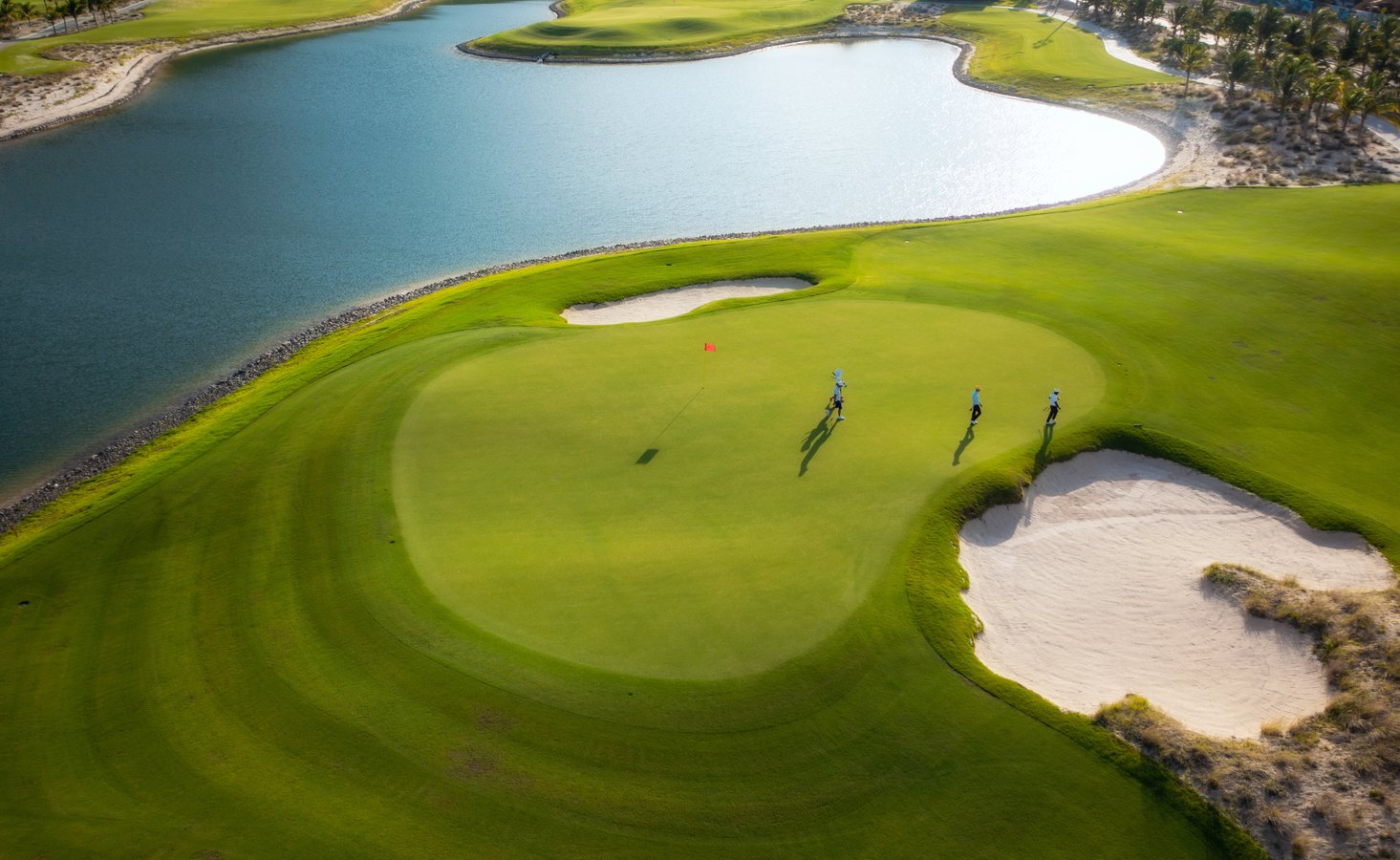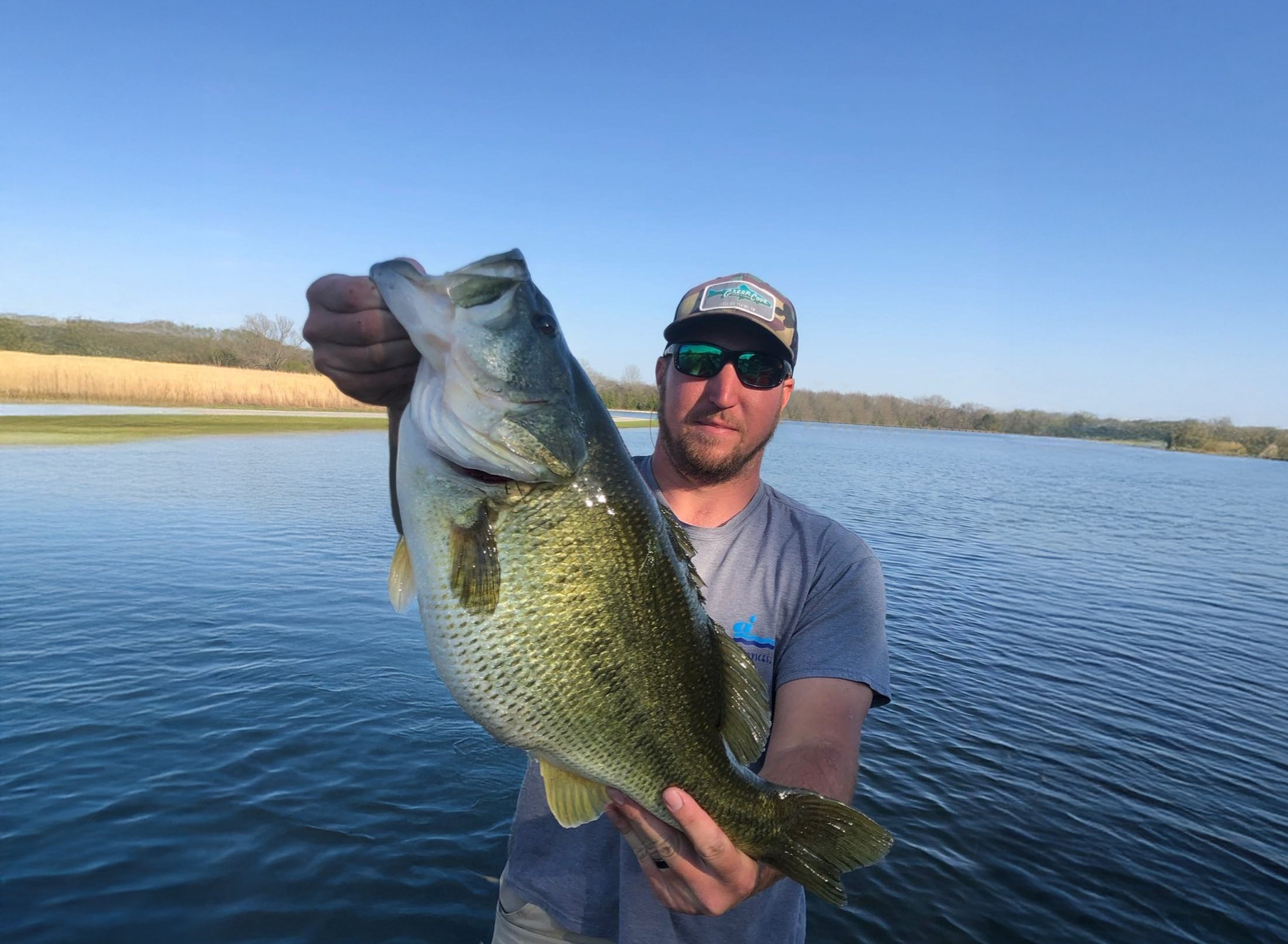Golf Course Pond Management: A Superintendent’s Guide to Smarter Water Systems

Reduce Irrigation Risks, Improve Playability, and Eliminate Costly Surprises
You’ve got greens to mow, fairways to fertilize, and members expecting premium playing conditions. The last thing you need is an algae outbreak clogging your pump intakes or a shoreline collapse ruining your drainage setup. But that’s exactly what happens when ponds get overlooked.
At Aqua Services, we help superintendents and course managers take control of pond systems with a science-driven approach that protects turf, keeps irrigation flowing, and helps courses avoid expensive downtime. This guide outlines practical, proven strategies to make your ponds perform—not just exist.
Know What You’re Working With
Most courses have a mix of pond types, each with different maintenance priorities:
• Retention ponds (wet ponds) hold water year-round, double as irrigation reservoirs, and visually anchor key holes.
• Detention basins (dry ponds) control runoff during storms and help prevent erosion—but can be hotspots for debris buildup.
Knowing the purpose of each helps you prioritize inspections, identify risks, and plan the right maintenance intervals.
When Ponds Are Neglected, Here’s What Can Go Wrong
Course ponds are often multi-functional—but without the right care, they quickly turn into problem areas.
• Sediment buildup reduces water depth, clogs pump intakes, and can require costly dredging.
• Algae blooms caused by excess nutrients threaten to clog irrigation systems and lessen aesthetics.
• Overgrown vegetation slows drainage, harbors mosquitoes, and creates compliance headaches.
• Erosion damages shorelines, drops bank stability, and sends more sediment right back into your system.
That’s why monitoring and preventive care aren’t just “nice to have”—they’re operationally necessary.
Inspection Should Be Routine, Not Reactive
Pond inspections should be built into your maintenance calendar—especially after heavy rain events. Watch for:
• Inlet/outlet blockages
• Bank erosion or slumping
• Debris at pump intakes
• Sediment accumulation at coves
• Invasive species or unexpected vegetation growth
Early detection means less repair time, fewer work orders, and lower labor costs.
Shoreline Stabilization = Infrastructure Protection
Left unchecked, shoreline erosion doesn’t just look bad—it sends sediment into the water and can damage surrounding turf. Smart options include:
• Buffer plantings: Native grasses and low-mow zones that reduce runoff velocity
• Hard armoring: Rip rap or coir logs in high-traffic areas to protect against slope failure
• Strategic dredging: For heavily impacted ponds, hydraulic dredging restores depth and improves water quality
Nutrient Control Starts on Land
Most algae problems start upstream:
• Fertilizer overspray
• Clippings left near shorelines
• Decomposing organics
• Waterfowl waste
Solutions include:
• Keep a no-fertilizer buffer around pond edges
• Redirect clippings and mow away from shorelines
• Maintain vegetative buffers to filter runoff
• Conduct water testing to monitor nutrient trends
These low-cost adjustments reduce chemical dependence later in the season.



Aeration Prevents Expensive Surprises
When water stagnates, you risk oxygen crashes, odor complaints, muck buildup, and mosquito activity. Aeration helps fix this—quickly.
• Surface fountains: Add aesthetics while improving oxygenation in visible areas
• Subsurface diffusers: Quiet, efficient, and ideal for deep or remote ponds
By keeping water moving, you maintain water quality, reduce biological loading, and improve the effectiveness of other treatments.
Irrigation Ponds Require Special Care with Herbicides
If you’re pulling water for irrigation, herbicide selection becomes mission-critical. Certain treatments can impact turfgrass or ornamentals if water reenters your system too soon.
• Always use labeled products for irrigation sites
• Factor in holding times and water use restrictions
• Consult experts before treating active irrigation ponds
At Aqua Services, we help you strike the balance between effective vegetation control and protecting the integrity of your turf systems.
Vegetation Control That Won’t Come Back to Haunt You
A few aquatic plants? No big deal. A mat of floating weeds or submerged growth choking your intakes? That’s a maintenance nightmare.
Our proactive strategies include:
• Spring monitoring and early detection
• Mechanical removal when practical
• Biological controls like triploid grass carp
• Responsible herbicide application by licensed pros
The key is early action before plant growth spikes and budgets get stretched.
Integrate Pond Management Into Your Existing Maintenance Plan
Your ponds aren’t standalone—they’re connected to your pumps, your compliance strategy, your turf health, and even your player experience.
Coordinating pond care with your larger course operations helps you:
• Avoid pump shutdowns and emergency service calls
• Improve long-term irrigation consistency
• Meet compliance and safety standards
• Deliver the aesthetic standards your members expect
Let’s Keep Your Focus Where It Belongs
You don’t need to become an aquatic biologist to manage your ponds well—you just need the right partner. Aqua Services helps superintendents and managers across the region simplify pond maintenance and stay ahead of costly surprises.
Ready to get proactive? Let’s walk the course together and build a plan that protects your ponds—and your schedule.
About Aqua Services, A Jones Lake Management Partner
Since 1983, Aqua Services has been a trusted leader in lake and pond management, delivering scientifically backed solutions to create and maintain healthy, balanced, and beautiful waterbodies. As a Jones Lake Management Partner, our team specializes in a full range of services to include algae and aquatic weed control, aeration systems, water quality monitoring, fisheries management, hydraulic dredging, invasive species control, and shoreline restoration. We work with HOAs, municipalities, golf courses, and private lake owners throughout Alabama, Arkansas and Georgia to maintain balanced and thriving aquatic environments through science-based and sustainable management practices.
Topics
- Aeration (3)
- Algae (3)
- Aquatic Weeds & Algae Control (6)
- Bathymetry Mapping (1)
- Company News & Updates (1)
- Erosion Control & Sediment Reduction (4)
- Fisheries Management (10)
- Fountains & Aeration (6)
- Hydraulic Dredging (2)
- Invasive Species Management (3)
- Lake & Pond Management (12)
- Lake Management (4)
- Nutrient Management (7)
- Pond Management (1)
- Sediment Sampling (3)
- Storm-Water Basins & Pollution (1)
- Stormwater & Runoff Management (4)
- Water Quality (3)
- Water Quality Monitoring (1)

Our fisheries management programs are designed to meet your specific goals—whether that’s trophy bass production, family-friendly fishing, or enhancing the overall ecological balance of your pond.